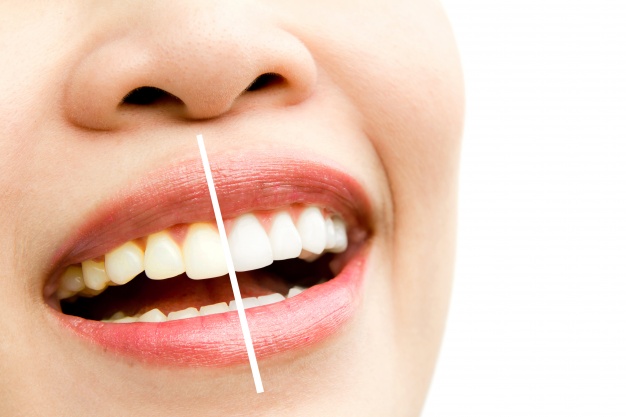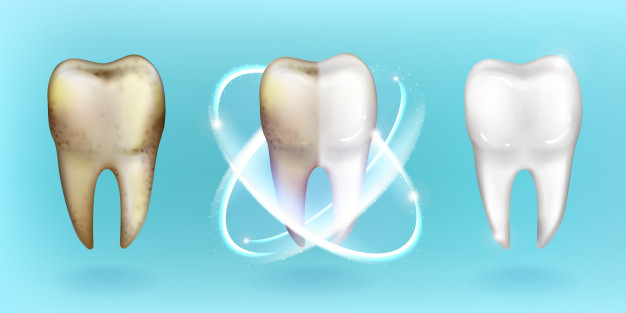External tooth whitening
In order to whiten teeth safely, your dental surgeon offers 2 types of protocols:
– Daytime whitening, based on 6% hydrogen peroxide, is applied in a custom-made flexible mouthpiece 45 minutes per day, for 15 days.
– Night whitening, based on 10% carbamide peroxide, is applied in the mouthpiece and left overnight for 10 to 15 days.
During the entire treatment, foods such as coffee, tea, red wine, red fruits and spices should be avoided so as not to compromise the bleaching.
If dental sensitivities appear during treatment, it will be possible to stop the treatment for a few days while they decrease and resume afterwards.
Internal tooth whitening
When the dyschromia (unsightly or uneven shade) only affects a single tooth, often dead or devitalized, depending on the condition of the tooth, it will be possible to whiten that tooth.
For this, you will need 3 appointments:
– Treatment of the root canal of the affected tooth
– Seal the treatment and apply the bleaching product in the canal
– Reassess the shade of the tooth at 3 days then at 7 days.
Onlays
Onlays are used to repair a decayed or fractured tooth in surface, whether it is already treated or not. Onlays are an aesthetic alternative to replace damaged fillings or old composites.
They are made from ceramic or hybrid / composite materials in our prosthesis laboratory located in Lyon. Two sessions are necessary for their realization:
– A tooth shaping and impression session
– A placement session of the piece.
The mechanical resistance of onlays is greater than that of amalgams (fillings) and resins produced directly in the chair by conventional techniques. They therefore last longer and strengthen the tooth.
In addition, onlays provide better adhesion quality than with conventional filling thanks to the remarkable performance of the part’s bonding to dental tissues, namely enamel and dentin.
Onlays also increase the reliability of the point of contact with adjacent teeth, reducing the risk of food settling, recurrence of cavities and gum inflammation problems.
In the case of large-volume cavities, performing an onlay is a more conservative and less decaying alternative to a crown.
Treatment of white enamel lesions on the upper incisors
The treatment of enamel lesions of the upper incisors uses a conservative and harmless technique, the ICON erosion-infiltration technique.
It consists of the creation of porosities within the enamel by the use of an acid, then the infiltration of a fluid resin to hide the white spot.
The treatment is done in one appointment after which the results are spectacular and the procedure completely painless.




